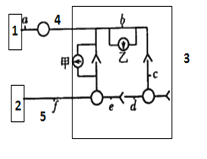A team of researchers in California has developed a way to predict what kinds of objects people are looking at by scanning what’s happening in their brains.
When you look at something, your eyes send a signal about that object to your brain. Different regions of the brain process the information your eyes send. Cells in your brain called neurons(神经元) are responsible for this processing.
The fMRI (functional Magnetic Resonance Imaging功能性磁共振造影) brain scans could generally match electrical activity in the brain to the basic shape of a picture that someone was looking at.
Like cells anywhere else in your body, active neurons use oxygen. Blood brings oxygen to the neurons, and the more active a neuron is, the more oxygen it will consume. The more active a region of the brain, the more active its neurons, and in turn, the more blood will travel to that region. And by using fMRI, scientists can visualize which parts of the brain receive more oxygen- rich blood--and therefore, which parts are working to process information.
An fMRI machine is a device that scans the brain and measures changes in blood flow to the brain. The technology shows researchers how brain activity changes when a person thinks, looks at something, or carries out an activity like speaking or reading. By highlighting the areas of the brain at work when a person looks at different images, fMRI may help scientists determine specific patterns of brain activity associated with different kinds of images.
The California researchers tested brain activity by having two volunteers view hundreds of pictures of everyday objects, like people, animals, and fruits. The scientists used an fMRI machine to record the volunteers' brain activity with each photograph they looked at. Different objects caused different regions of the volunteers' brains to light up on the scan, indicating activity. The scientists used this information to build a model to predict how the brain might respond to any image the eyes see.
In a second test, the scientists asked the volunteers to look at 120 new pictures. Like before, their brains were scanned every time they looked at a new image. This time, the scientists used their model to match the fMRI scans to the image. For example, if a scan in the second test showed the same pattern of brain activity that was strongly, related to pictures of apples in the first test, their model would have predicted the volunteers were looking at apples.
51. What is responsible for processing the information sent by your eyes?
A A small region of the brain.
B The central part of the brain.
C Neurons in the brain.
D Oxygen-rich blood.
52. Which of the following statements is NOT meant by the writer?
A Cells in your brain are called neurons.
B The more oxygen a neuron consumes, the more blood it needs.
C fMRI helps scientists to discover which parts of the brain process information.
D fMRI helps scientists to discover how the brain develops intelligently.
53. "Highlighting the areas of the brain at work" means
A "marking the parts of the brain that are processing information"
B "giving light to the parts of the brain that are processing information"
C "putting the parts of the brain to work"
D "stopping the parts of the brain from working"
54. What did the researchers experiment on?
A Animals, objects, and fruits.
B Two volunteers.
C fMRI machines.
D Thousands of pictures.
55.What is the best title for the passage?
A Mind-reading Machine
B A Technological Dream
C Device that can Help You Calculate
D The Recent Development in Science and Technology
51-55 CDABA

